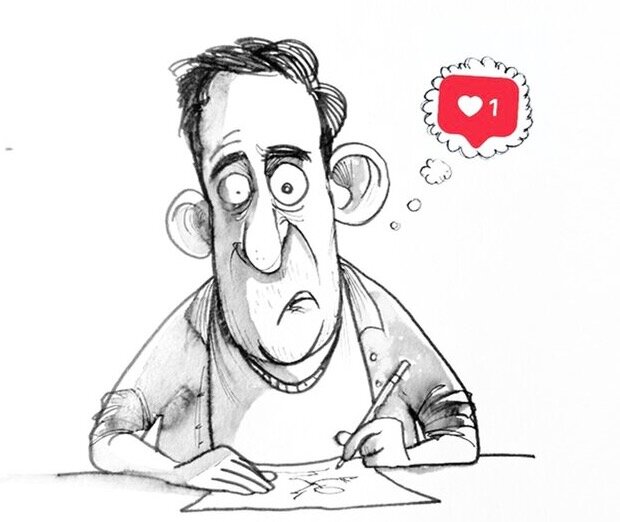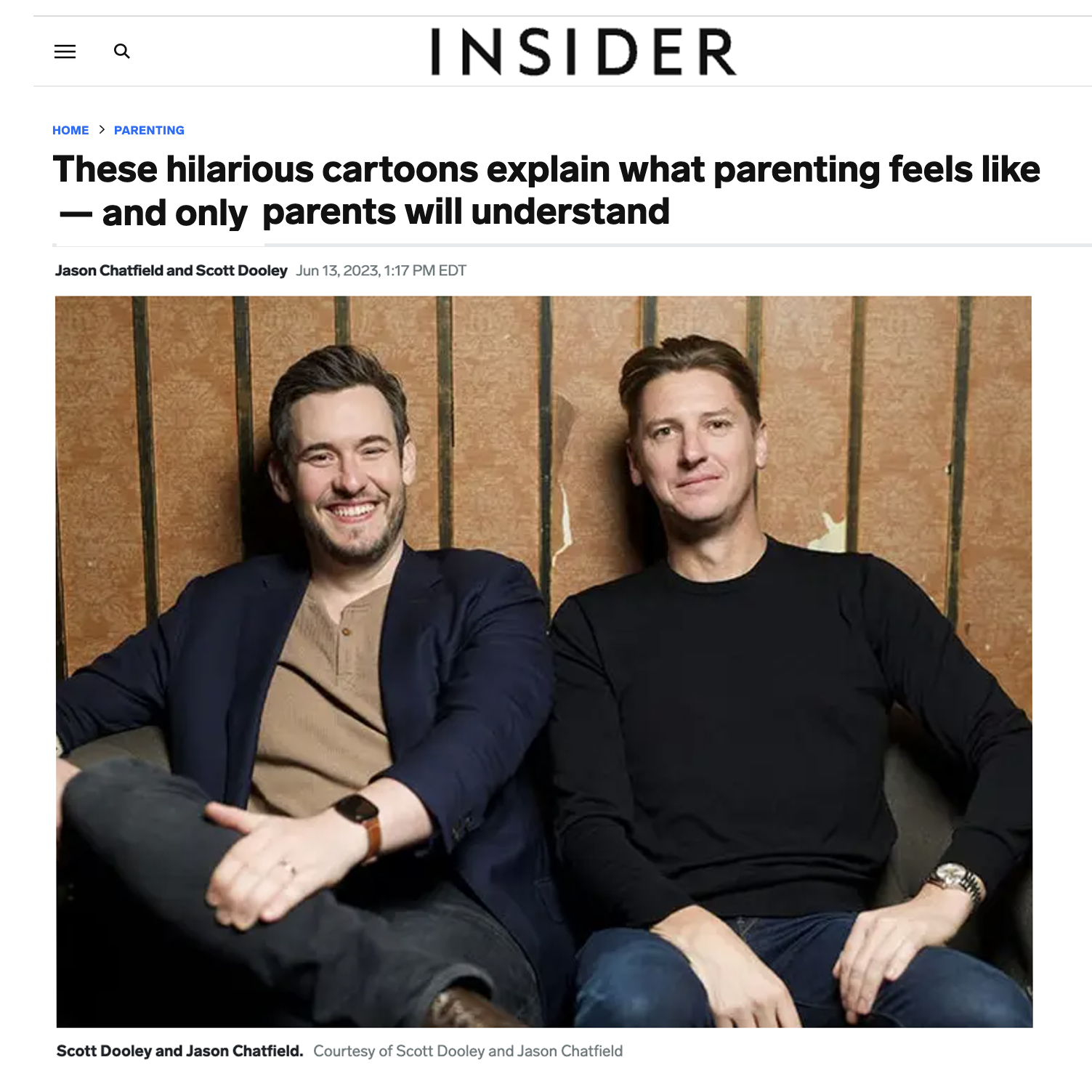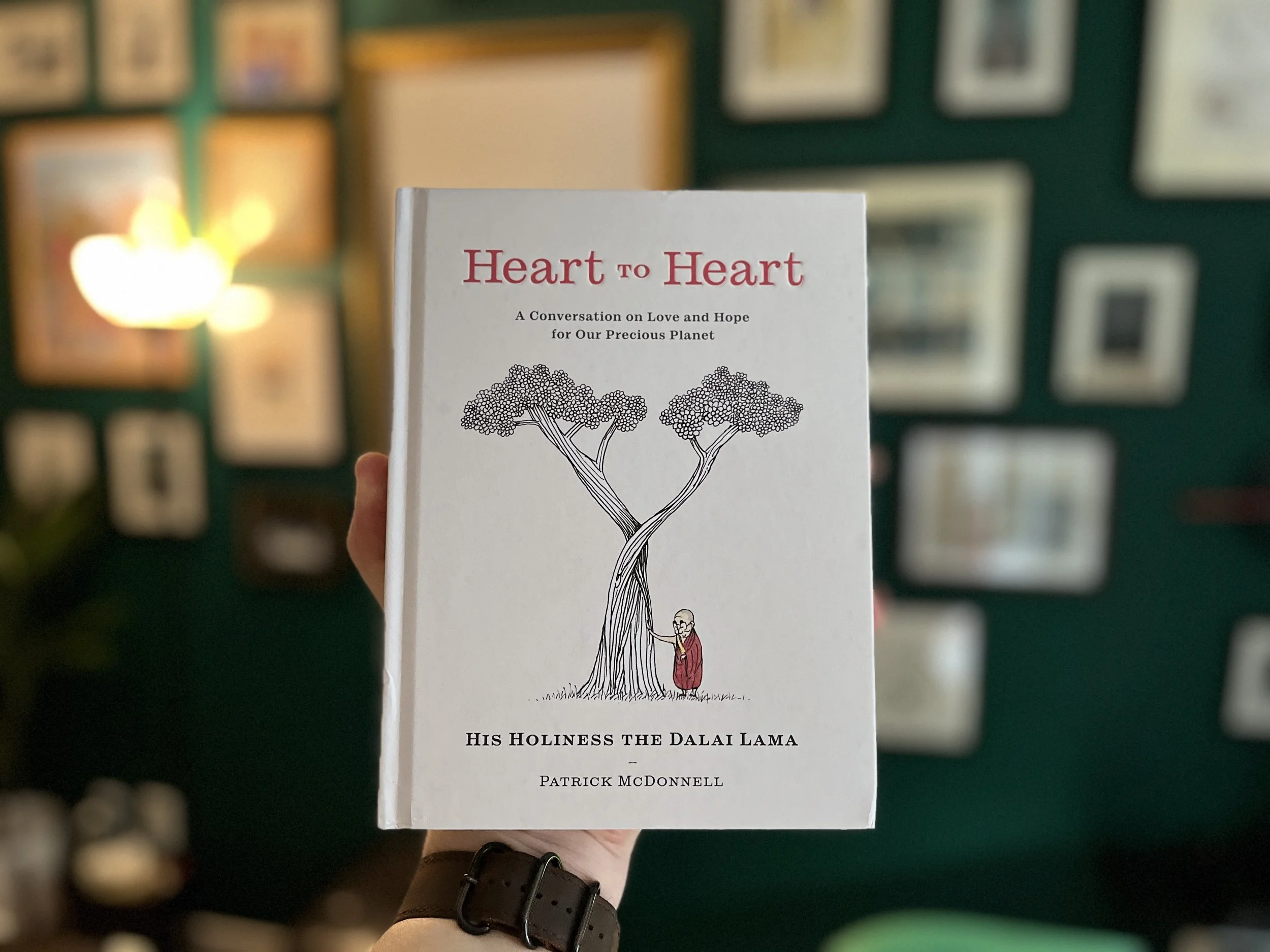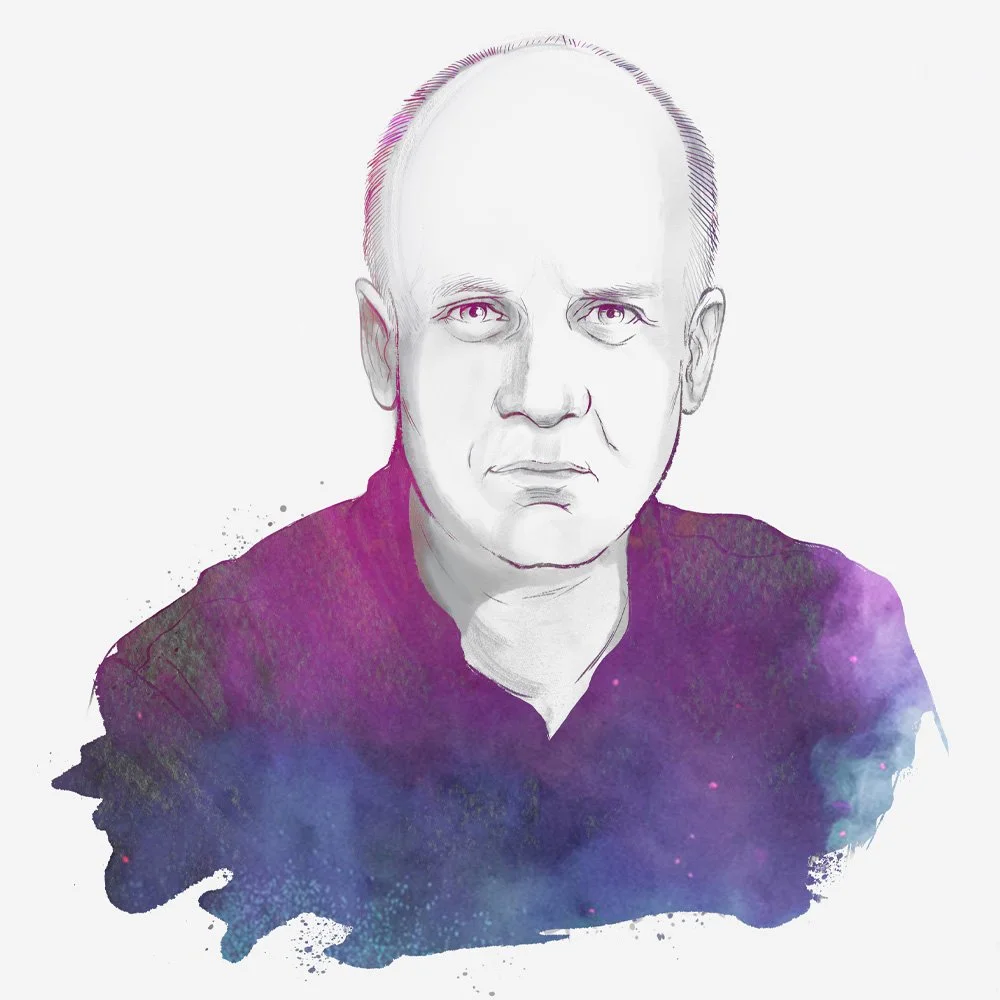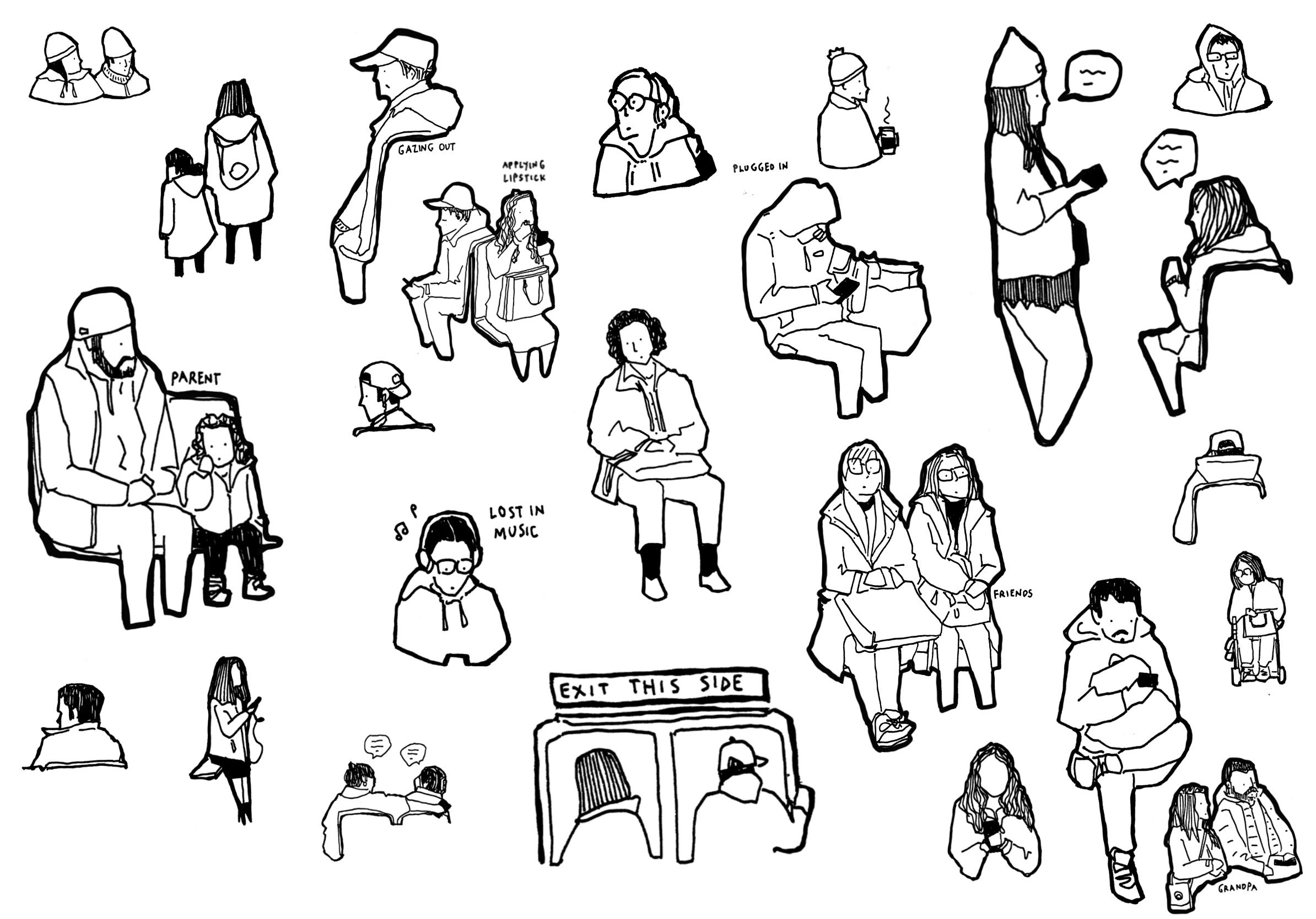A Cartoonist and The Dalai Lama Walk Into a... Publishing House.
I just finished Patrick McDonnell’s incredible new collaboration with His Holiness, The Dalai Lama, and I’m in awe.
I’m not sure too many cartoonists get to collaborate with historic figures like this very often, but if anyone was equipped to do it (and take a sabbatical from their comic strip to do it) it is Patrick McDonnell.
I did not expect to have such an emotional reaction to the book, but here I am, sitting in a chair with my heart pounding through my chest. From a book.
It really is a masterpiece, and I’m glad Patrick gave his fellow cartoonists a sneak peek (without breaching any NDA’s) at the Reuben Awards in Kansas City last year, ahead of its release. It’s pretty damn special I highly recommend it.
2021 Book Recommendations
I’ve never really done any book recommendations. That’s likely due to the fact that I’ve barely had time to finish a book in the past 7 years. But since quitting social media in July, I’ve finished over a dozen books. Weird.
Inspired by Brendan Leonard at SemiRad and his very helpful 2021 Book Recommendation List, I’ve compiled a list of books I enjoyed this year. Many of them I started or skimmed previously but didn’t actually finish until this year. Good for me. I hope you enjoy them.
Note: Some of the links below are affiliate links. That means if you buy books through the links, I will receive a small amount of cash to buy food for Morris. Where possible, I used links to Bookshop or the publisher’s website when possible. If you don’t know how Bookshop works: You can select a local independent bookstore from Bookshop’s list, and when you buy a book, that bookstore gets a small commission from the sale. If you like bookstores, and you would like them to stick around, it’s great.
Also… if you like bookstores, my friend and fellow New Yorker cartoonist Bob Eckstein did an entire book about bookstores. It’s wondrously meta.
Waking Up Portraits: David Whyte on Anger & Forgiveness
Recently I got to draw a portrait of the poet and philosopher, David Whyte for Sam Harris’ Waking Up app. (See other portraits here.)
Their conversation was about his ongoing series for the Waking Up app, based on his book, Consolations: The Solace, Nourishment and Underlying Meaning of Everyday Words.
With the imagery of a poet and the reflection of a philosopher, David turns his attention to ordinary words, each a doorway into the underlying currents of human life.
They discuss 3 tracks in this session—Anger, Forgiveness, and Maturity.
I am still slowly working my way through the paperback of Consolations. It definitely works wonders on your eyes, seeing the shape of the stanzas on the page, but David’s voice (and accent) are enough to send you into a deep state of chill.
His repetition of certain phrases or passages sometimes might throw you, but it does a great amount of work in ensuring comprehension.
There’s a nice long episode of the Waking Up podcast with David that you can find for free and a longer version for subscribers. His musings on the evolution of minds, friendship, parental relationships and time itself are profoundly insightful. It’s no wonder Sam has him in the app about 4 different times on different topics.
Waking Up Portraits: Oliver Burkeman on Deep Time
Last week I got to draw a portrait of the columnist and author Oliver Burkeman for Sam Harris’ Waking Up app. (See other portraits here.)
Their conversation was as enlightening as it was terrifying. The stark truth of how very finite your existence in this plane of consciousness is can jolt you awake pretty abruptly. Kind of the way you feel walking out of a church after a funeral service; realising the banality of the quotidian anxieties you had before walking in.
I tore through Oliver’s fantastic new book, Four Thousand Weeks: Time Management for Mortals on account of my very complicated relationship with time.
Over the past 14 years, I’ve been a syndicated comic strip cartoonist, which means I’ve lived under the shadow of a looming due date every day of my life since signing that contract. My ensuing dance with the dreaded deadline demon has changed my very perception of time, how psychological time is perceived as I get older, and how it relates to the notions and laws that Burkeman delves into in this book: most specifically, Parkinson’s Law* and Hofstadter's Law.
*I’ve written about Parkinson’s Law before, in elucidating my weekly process of working from a calendar instead of a to-do list to ensure you have a realistic idea of how long to allow for the work you have to get done.
The exploration of Psychological time VS. Clock Time is a fascinating part of the book. Not only as to how it changes once you’ve practised meditation and explored your relationship with the mind over time, but also when cross-referenced with the work done by Daniel Kahneman and Amos Tversky on the Remembering Self VS. the Experiencing Self and the numerous "cognitive illusions" that affect human judgement.
Kahneman has a brilliant book called Thinking, Fast and Slow, which explores the thesis of a dichotomy between two modes of thought: "System 1" is fast, instinctive and emotional; "System 2" is slower, more deliberative, and more logical.
*Affiliate Link
Burkeman’s writings on Hofstadter's law were enlightening. Particularly as it pertained to allowing slack into our schedules: nothing ever takes the amount of time you plan it to take, no matter how carefully you plan.
Efforts to influence the future, the special kind of anxiety that comes from trying to control things inherently out of your control (ie. my regular trick of over-planning to try and leave for the airport 4 hours earlier than I need to.), and the un-ending stress related to uncertainty are all deeply explored in the book. It’s comforting to know I’m not alone in my madness.
I remember in my twenties I was so frustrated with personal time inconsistencies that I wound my wristwatch forward ten minutes. In an effort to be early, I was still arriving everywhere right on time (which is late).
Since then I’ve ascribed to the “Early is on time, On time is late, Late is unacceptable” model with wildly varying degrees of success.
My mum and stepdad both use spreadsheets for their trip planning; knowing exactly what they’ll be doing on every hour of every day they’re on holiday. There is utility in maximising your time and making sure you don’t miss out on doing anything, but there is also a lot of enjoyment that comes from having no spreadsheet or plan whatsoever.
The most memorable travel experience I had was in Paris, alone for a few days on my way to a conference. I had no schedule. I just wandered around Paris with no plan except ‘to get as lost as possible and try to find my way back to the hotel again’. I ended up circumnavigating the entire city on foot and making all kinds of accidental discoveries.
We do not rest satisfied with the present.... So imprudent we are that we wander in the times which are not ours and do not thinkof the only one which belongs to us; and so idle are we that we dream of those times which are no more and thoughtlessly overlook that which alone exists. For the present is generally painful to us.
~ Blaise Pascall
The chapter on Rediscovering Rest was another great journey: that feeling you get when you sit and read a book, knowing you have a million other things on your to-do list that you ‘could’ be doing instead, gnawing away at your subconscious until you’re overcome with the desire to check your phone/email/slack/tick another shallow work item off your list.
I read a great book by Alex SooJon Kim called “Rest: Why You Get More Done When You Work Less*” that also explores a lot of the concepts in this chapter: Why actually uncoupling your obsession with getting to the mythical “To-do list zero” or “clearing the decks”, is a good thing. I love both of their writing on “waiting for the absolutely perfect moment to start that important project”, and why it is a fallacy.
*Affiliate Link
It bears repeating that there really will never be a moment in time when the conditions for the work you’re intending to do are completely perfect. You’re in the right mood, your to-do list is empty, your computer is perfectly organised, your apartment is clean, your hair is done, your space is completely free of distractions. Maybe one or two of these things can be so, but never all of them. You just need to prioritise the things that need to be done, and do them. Rather, you need to learn to say NO to everything else.
Eat the frog. Do the most important, hardest thing first in your day and you’ll never have regret when 5pm rolls around. Among other key takeaways, this is a valuable one. It isn’t particularly new, but it is worth reiterating.
Also explored in the book is the notion of the Last Time Meditation. I’ve written about this Stoic practice before because I find it a very quick way to become mindful of an experience when I’m getting buried in my head. This happens often.
Burkeman credits Sam Harris with the practice, (since it appears in the Waking Up app under the Stoic Meditations section by William B. Irvine), but the practice goes back to the days of Marcus Aurelius, and remains very effective today. Both Irvine and Ryan Holiday have written about the positive psychological effect that particular meditation can have on your wellbeing, despite being a relatively morbid exploration on the finite nature of time, life and the experiencing self.
The bottom line is: if like me, you’re tied up in the anxiety of the future-chasing mindset, you may be better served to adopt some of the insights from this book to just ready yourself for the uncontrollable future. There are things beyond our control; the one thing we can control is our reaction to them.
“I don’t mind what happens. That is the essence of inner freedom. It is a timeless spiritual truth: release attachment to outcomes, deep inside yourself, you’ll feel good no matter what.”
— Jiddu Krishnamurti
☝️
(Affiliate link)
Footnote:
There is a passage in the final chapter of the book that references a letter by Carl Jung:
“On December 15, 1933, Carl Jung wrote a reply to a correspondent, Frau V., responding to several questions on the proper conduct of life, and his answer is a good one with which to end this book. “Dear Frau V.,” Jung began, “Your questions are unanswerable, because you want to know how to live. One lives as one can. There is no single, definite way…If that’s what you want, you had best join the Catholic Church, where they tell you what’s what.” By contrast, the individual path “is the way you make for yourself, which is never prescribed, which you do not know in advance, and which simply comes into being itself when you put one foot in front of the other.” His sole advice for walking such a path was to “quietly do the next and most necessary thing. ”
Excerpt From: Oliver Burkeman. “Four Thousand Weeks.”
There is, to me, a more powerful letter written by the late Hunter S. Thompson in reply to a similar letter asking for life advice. The crux of the letter is this: “…beware of looking for goals: look for a way of life.” These words have stuck with me. The full letter can be found here.
Book Review: Anvils, Mallets & Dynamite: The Unauthorized Biography of Looney Tunes
Looney Tunes cartoons, writes celebrated television critic Jaime Weinman, are the high-water mark of American filmed comedy. Surreal, irreverent, philosophical, and riotously funny, they have maintained their power over audiences for generations and inspired such giants of the cinema as Mel Brooks, Steven Spielberg, and George Lucas.
Book Recommendation: Born Standing Up
I haven’t really done many book recommendations on the blog, but there are many I’d recommend for anyone interested in humor, writing or cartooning.
The best book I ever read on comedy wasn’t a ‘how-to’ or a compendium of interviews with comedians, it was an autobiography of someone who found something truly unique at a time when nobody else was doing what he was doing.
The book is Steve Martin’s “Born Standing Up". It charts his life from early childhood through to his perseverance as a magician, parlaying his skills into live stand-up comedy at a time when nobody else was able to parody what the newly formed ‘norms’ of comedy were.
It’s hear-breaking, funny, riveting, and one of the most memorable books I’ve ever read. I had absolutely no idea Steve Martin started as a magician, much less a touring comedian, when I was coming up as a comic in Australia. I just though he was a goofy rom-com movie actor who did silly films about being the Dad at weddings.
The absurd story of him being forced to perform to no audience so that people might look into the window and ‘see that something’s happening and might come in’ is only topped by the story of his audience that refused to leave, so he took them all outside into an empty swimming pool for an encore.
Interestingly, (and I think about this a lot), When Jerry Seinfeld asked Steve whether he would be successful if he did his act now, he said, “No.” and continued “It was of a time and a place, and that time has passed.”
I would highly recommend watching The Jerk before reading this book. —and if you have any inclination whatsoever to delve into the life of stand-up comedy, read this book before any other book. (You can take his Masterclass over on masterclass.com, too, but that’s a different story.)
Anyway. You can find the book here.
Recommended Books on How to be a Gag Cartoonist?
(Please disable your Ad-Blocker to see images and links in this review.)
I get a lot of emails and DM’s from aspiring cartoonists asking for advice on courses or books to read on cartooning; particularly the art of gag cartooning. All I can do is refer you to two of the best books I was referred to on this topic when I was starting out, and those are:
(If you can't see the above, turn off your ad blocker)
This one above* is by Mort Gerberg, who I think still holds the record for ‘most detailed first New Yorker cartoon in history’. (It was a full-pager of the ornate interior of church; a gag about high ceilings.) I think the thing I like about Mort’s book is the more you refer back to it, the more you learn a little bit you might have missed the last time you read it. Mort continues to publish New Yorker cartoons to this day from his home in Manhattan. He still comes into the open pitch meetings and the local New Yorker events, and is one of those ever-adaptable cartoonists who keep up with the trends. (He has an Instagram and a Twitter you can follow.)
*It should be noted that it has since been republished under other publishers, but this is the original version. The opening chapter or two about schlepping around New York on a Wednesday to the various publishers with a stack of cartoons under your arm is a thing that just doesn’t exist any more. The only open call cartoon publication left of that stature is The New Yorker.
(Note: Mort has an exhibition opening at the New York Historical Society Museum & Library on 15th February this year. Link.)
The other book I was recommended, which I also refer back to often is “The Cartoonist's Muse: A Guide to Generating and Developing Creative Ideas” by Mischa Richter and Harald Bakken. I think either Tony Lopes or Glen LeLievre referred me to this book back in Australia about a decade ago, and to this day I recommend it to other cartoonists (and refer back to it myself very often).
(If you can't see the above, turn off your ad blocker)
There is a lot more work than you realise that goes into creating a good cartoon, and these books are very instructive on the elusive craft therein.
Every week, I do a podcast with my friend Scott Dooley about this very topic of coming up with New Yorker cartoons, and by some miracle, we’re getting a few across the line at The New Yorker and MAD Magazine on a regular basis. You can subscribe to it wherever you listen to podcasts.
NOTE:
If you have any good book recommendations on gag cartooning, by all means let me know if the comments. I love getting new recommendations.


